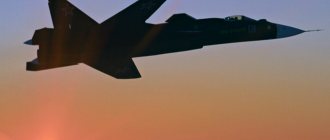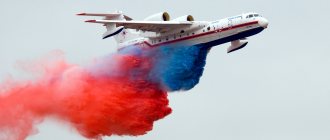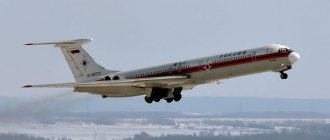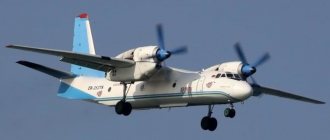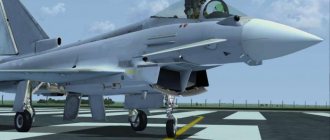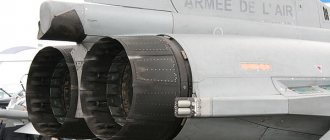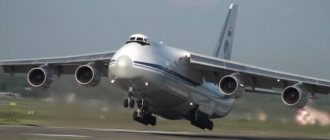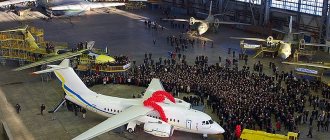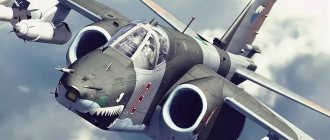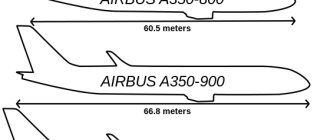This term has other meanings, see Type 92.
| Type 92 | |
| Type 92 | |
| Type | heavy machine gun |
| A country | Empire of Japan |
| Service history | |
| Years of use | 1932–1950s |
| Adopted | 1932 |
| In service | See Operators |
| Wars and conflicts | Sino-Japanese War (1937–1945) World War II Chinese Civil War Korean War Vietnam War |
| Production history | |
| Constructor | Kijiro Nambu |
| Designed by | 1932 |
| Manufacturer | Hino Motors, Hitachi |
| Years of production | 1932 — 1941 |
| Total issued | 45 000 |
| Characteristics | |
| Weight, kg | 28 (machine gun body) + 24 kg (machine) |
| Length, mm | 1,156 |
| Barrel length, mm | 721 |
| Cartridge | 7.7×58mm Arisaka |
| Caliber, mm | 7,7 |
| Work principles | Removal of powder gases |
| Rate of fire, rounds/min | 400–450 |
| Initial bullet speed, m/s | 800 |
| Sighting range, m | 800 |
| Type of ammunition | rigid tape cassette for 30 rounds |
| Media files on Wikimedia Commons | |
Type 92
(九二 式 重 機関 銃 Kyūni-shiki jū-kikanjū) is a Japanese heavy machine gun created in 1932 to replace the Type 3 machine gun in the army. The name Type 92 comes from the year of adoption - 2592 according to the Japanese calendar (1932 according to the Gregorian calendar) )[1]. The machine gun was produced at the Hino Motors and Hitachi factories, the total production volume was about 45,000 units[2].
Story
In 1932, the Japanese army adopted a new rifle cartridge, 7.7×58 mm SR Arisaka Type 92, designed to eventually replace the 6.5 mm caliber cartridge, which did not fully satisfy the army with its characteristics. This cartridge was based on the English .303 cartridge used in Japanese aviation. The Type 92 heavy machine gun, which was a development of the 6.5 mm Type 3 machine gun[3], was created and adopted for this cartridge.
The machine gun was widely used by the Imperial Japanese Army and Chinese collaborators[4]. Captured Type 92s were also used by the National Revolutionary Army of China against the Japanese during World War II, the Korean People's Army against United Nations forces during the Korean War, and the MNLF and VNA during the war with France and during the Vietnam War.[4]
SM-92 / Light multi-role aircraft
- Total information
- Monitoring
- Data change date: 12/22/2015
SM-92 "Finist"
Light multi-purpose aircraft "Finist" developed by NKF (scientific and commercial) Can be used as a passenger, landing, ambulance, agricultural and training aircraft. The SM-92 "Finist" aircraft can be operated on sites with low soil strength Produced at the Smolensk Aviation Plant since 1993.
MODIFICATIONS:
Aircraft can be supplied in the following modifications:
- SM-92P - modification ordered by FPS;
- passenger for 6 passenger seats with luggage;
- transport for 600 kg of cargo;
- landing for training parachutists or dropping 4 paratroopers-firefighters with equipment;
- sanitary for transporting 2 bedridden patients and 1 accompanying person;
- agricultural with a tank for 600 kg of chemicals;
- educational for preparation for flights on aircraft of the same type or for initial training;
- float (developed for one of the companies in Canada);
- for aerial photography;
- for searching and patrolling objects;
- on a ski chassis, etc.
DIMENSIONS.
- Length 9.13 m;
- wingspan 14.60 m;
- chassis track 3.20 m;
- passenger compartment width 1.27 m;
- cargo door: 1.35 x 1.12 m;
- propeller diameter 2.40 m.
NUMBER OF PLACES.
Crew - 1 (in the SM-92P version - 3);
passengers - 6 (in the SM-92P version - up to 8 people). POWER POINT.
1 x PD x M-14P x 360 hp
The propeller is a three-bladed MTV-9 automatically variable pitch propeller, developed by the German company (President Gerd Muhlbauer). The same propellers are installed on Sukhoi Su-29 and Su-31 sports aircraft. Produces propellers from Moscow (under license from MT-Propeller). It is possible to install a turboprop engine. WEIGHT.
- Maximum take-off 2350 kg;
- maximum landing 2350 kg;
- normal take-off 2350 kg;
- loaded 1500 kg;
- maximum commercial load 600 kg;
- maximum fuel reserve 380 l.
FLIGHT DATA.
- Maximum speed 280 km/h (250 km/h);
- Maximum cruising speed 230 km/h;
- Recommended cruising speed 200-210 km/h;
- Cruising altitude 300-3000 m;
- Practical range: with maximum fuel reserve 1500 km, with 6 passengers 1000 km, with maximum payload 615 km;
- Required runway length 300 m;
- Maximum patrol duration 7.5 hours;
- The aircraft's service life is 10,000 hours or 20,000 landings.
EQUIPMENT.
Flight and navigation equipment allows the aircraft to fly day and night in simple and adverse weather conditions.
In the SM-92P modification, a search radar can be installed on the right wing console. In addition, the pilot has a simple optical sight that provides bombing, machine gun fire and NURS launching. WEAPONS.
If a sufficiently large batch of SM-92 aircraft is ordered by the Federal Border Guard Service of the Russian Federation, the following can be installed on SM-92P aircraft on 6 weapon hardpoints: up to 2 B-8V-7 units with 80 mm caliber NURS;
free-falling bombs; PKT machine guns; 1 machine gun is mounted on a swivel in the door on the left side of the fuselage. CONSTRUCTION AND MATERIALS.
The aircraft has an all-metal structure made of aluminum alloys.
If necessary, the aircraft can be equipped with a second control station (to date, all aircraft sold have been equipped with a second control station, since all customers were willing to pay for dual control). Heating and ventilation systems are standard equipment on the aircraft. COST AND FINANCING.
The cost of the aircraft in its basic configuration is $160 thousand.
By the end of 1995, the delivery of approximately 30 aircraft was paid, including 16 aircraft for the FPS and 5 for customers from Belgium. The development of the SM-92 aircraft and the organization of its production were carried out without attracting government funds. The estimated cost of the SM-92 aircraft of the first series of Voronezh assembly is estimated (as of 1999) at $203-206 thousand, i.e. higher than the cost of the same aircraft previously assembled in Smolensk. It is planned to receive up to 80% of the parts of components, assemblies and systems from the Smolensk Aviation Plant, which in turn set high prices for products of its production for deliveries to Voronezh. In addition, the price of the aircraft is also affected by the cost of imported components, with a total of 13 items costing $37 thousand. The aircraft's onboard equipment and German propeller must be imported. The M-14 engine produced by UMZ costs approximately $20 thousand. It is believed that as the number of sales increases and serial production increases, the price of the aircraft will decrease. As of 1999, all costs for organizing the production and release of SM-92 in Voronezh are borne by VSW. He has prepared a business plan and is counting on promised local tax breaks. The total cost of technological preparation for production, certification of the aircraft and equipment of the first aircraft was estimated at no less than $2-3 million. CERTIFICATION AND TESTING.
The aircraft's first flight took place on December 29, 1993.
SM-92 is designed in accordance with the norms and requirements of AP-23. At the beginning of 1995, it was planned to begin certification tests in the 1st quarter and complete them in the 4th quarter of 1995, but certification of the aircraft in Russia was stopped due to the unreasonably inflated cost of certification work. PRODUCTION AND RELEASE.
As of early December 1996, 8 SM-92Finist aircraft were built (in addition to 8 flight aircraft, one aircraft was built for statistical testing).
At MAKS-95, the ?6 aircraft was presented in the SM-92P modification. During 1995, only 3 aircraft were built, and during the period from January to November 1996, not a single one: by the beginning of 1996, serial production of the aircraft was practically suspended due to the difficult financial situation of the manufacturer. Joint production of the light multi-purpose aircraft SM-92 was started by the Voronezh Mechanical, Smolensk and Voronezh Aviation Plants. The management of the Voronezh Aviation Aircraft Society (VASO) provided Voronezh Mechanical Engineering with preparation for production (assembly), personnel selection and flight testing of the SM-92 at VASO. By manufacturing long-haul aircraft of the Il-96 type, VASO wants to look at the implementation of the SM-92 program, but is not participating in it now, however, creating all the conditions for the use of VASO space, equipment and personnel by VSW. VASO can join the program after its first real successes. Now VASO has allocated 2 buildings for the assembly of the SM-92, there is an agreement to use the VASO flight test station to test the assembled SM-92. It is planned to assemble and fly the SM-92 on the territory of VASO. The lead organization for the SM-92 program is VSW and sales will be carried out by it. In the future, if the assembly of the SM-92 in Voronezh is successfully completed, the creation of a joint venture between VME and VASO cannot be ruled out. In 1999, according to the “optimistic option,” it was planned to assemble up to 10 SM-92 aircraft in Voronezh, and according to the “pessimistic option,” at least 4. According to previous studies and calculations, the demand for SM-92 will be from 1300 to 1500 copies. In accordance with the contract signed in December 1994 between the Smolensk aircraft plant and the Federal Border Guard Service of the Russian Federation, 16 SM-92 aircraft were to be delivered to border guards by August 1995 with a delivery rate of 4 aircraft per month, however, such a delivery rate was due to the difficult financial situation of the aircraft plant were not met and the production of aircraft for the FPS was actually frozen. In the future, the FPS order could be increased to 150 vehicles. The total needs of the Federal Guard Service for aircraft of the SM-92 type are estimated at 300-500 units. PROGRAM STATUS.
Serial production of the aircraft has been carried out since 1993 at the Smolensk Aviation Plant.
The difficult situation at the plant in 1995 negatively affected the rate of aircraft production. The first Finist aircraft was purchased by Michael Crimble, chief pilot of the Queen of England, for personal use. The second plane was purchased by the Brussels Aero Club. ADDITIONAL INFORMATION.
The creation of the SM-92 Finist aircraft is a great achievement of the Technoavia team.
Development of the aircraft began in 1992, so the aircraft received the designation SM-92 (“Multi-purpose aircraft, ’92”). The creation of a modification of the aircraft for border guards is due to the need for close control of the state border of the Russian Federation, for which it is planned to assign an air squad of 4 aircraft to each outpost or detachment of border guards. To create the basis for aviation (air) border control and military testing, the first order was made for 16 SM-92 aircraft. One of the SM-92 aircraft crashed on February 13, 1999 near Orel. Two Voronezh pilots and two engineers were killed. Voronezh Mechanical Plant. Senior navigator Sergei Kasyanov, instructor pilot Vladimir Lapin, project manager “Small Aviation of the Black Earth Region” Yuri Yurovsky and his deputy Alexander Mosiets flew from Smolensk to Voronezh. The plane stopped responding to calls from Oryol dispatchers before reaching about a hundred kilometers from the city. Rescuers from the Ministry of Emergency Situations who arrived at the scene of the accident found only debris, dead pilots and two main project specialists who no longer needed help. The probable cause of the disaster, according to VASO chief engineer Mikhail Shushpanov, is a sharp deterioration in weather conditions on the flight segment: the plane was caught in a cyclone, fog, frost, zero visibility, icing probably occurred. In 1999, the SM-92 aircraft was demonstrated to the governors of the Central Black Earth region of Russia. DEVELOPER:
NKF Technoavia.
Monitoring:
02/14/2012 Production lines for Yak-18T and SM-92 aircraft remain in Smolensk
AviaPort.Ru:
Production lines for light civil aircraft Yak-18T and SM-92 “Finist” at OA…
12/19/2008 IAC issued a type certificate for the light multipurpose aircraft SM-92T “Turbo Finist”
Interstate Aviation Committee, press release:
On December 19, 2008, the Interstate Aviation Committee held...
09/05/2005 Border guards show interest in the SM-92 Finist aircraft
AviaPort.Ru:
The Federal Border Service is showing interest in using lightweight multi-purpose…
12/27/2004 The main buyers of the SM-92 Finist aircraft are abroad
AviaPort.Ru:
More than 15 light multi-purpose seven-seat aircraft SM-92 Finist were produced. Basic...
03/24/2004 Another batch of SM-92 aircraft was launched into serial production in Smolensk
AviaPort.Ru:
Currently, serial production at the Smolensk Aviation Plant has been launched...
- all materials (75)
Design
Structurally, the Type 92 resembled its predecessor Type 3 - it used a similar air cooling system, was loaded with 30-round rigid cassette tapes, and so on. Bullets fired from the Type 92 exited the barrel at about 730 m/s, and the rate of fire was about 450 rounds per minute. During the Pacific War, the Type 92 was periodically used to fire against aerial targets. Among Allied soldiers, the machine gun was nicknamed "woodpecker" due to the characteristic sound it made when firing due to its relatively low rate of fire, and Chinese soldiers nicknamed the Type 92 "chicken neck" (雞脖子).[4] The Type 92 had a maximum firing range of 4,500 meters, but in practice it fired at 800 meters.
The Type 92 was fired from a tripod machine of the Arisaka system. For anti-aircraft shooting, the machine is equipped with an additional stand, attached to the swivel. A distinctive feature of this machine is the tubular attachments at the ends of its supports. Special elongated handles are inserted into these attachments, forming a kind of stretcher for transporting the assembled machine gun by a crew of two or three people. In some cases, machine guns were installed on pedestal installations in bunkers[3].
What was unusual was the placement of the sight - it was tilted slightly to the right rather than in the center. Several different sights were produced for the Type 92 - the Type 93 and Type 94 periscopic sights, as well as the Type 96 telescopic sight. A ring-type anti-aircraft sight was also produced.
The main problems with these weapons included short belts - 30-round plates that did not allow the high rate of fire of belt-fed machine guns, and an integral oiler that ensured the cartridges in the belt were lubricated before they were fed into the barrel, which ensured reliable extraction in dirty conditions weapons, but increased its complexity and made it difficult to operate[5].
Airplane SM-92 "Finist", a seven-seat multi-purpose light aircraft, designed by the team to solve a whole range of problems, can be used to transport 6 passengers; landing of 7 paratroopers; transportation of large cargo weighing up to 600 kg; patrolling roads, forests, pipelines and other objects; patrolling the state border and communications operations; aerial photography work; training in piloting techniques, as well as as a paramedic, police officer, glider towing operator, and so on.
In close cooperation with the Smolensk Aviation Plant, the aircraft was put into production in record time - the first flight of the SM-92 prototype took place on December 29, 1993, just a year and a half after the start of design.
The aircraft have been repeatedly demonstrated at prestigious air shows, including at MAKS-97 - in the border guard version, and according to reviews from Western experts, they are of great interest in the international aviation market. The results of a series of test flights allow us to say with confidence that the aircraft is quite competitive and can take its rightful place among single-engine aircraft of this class.
SM-92 “Finist” is an all-metal braced and high-wing wing, made according to the traditional design. The power plant consists of a variable pitch propeller of the MTV-3 type and an M-14P engine with a power of 360 hp. Similar engines (or modifications thereof) are installed on all Russian light aircraft (Yak-55M, Su-26, Su-29, Yak-18T, Yak-52 and others). The power plant compartment is separated from the cockpit by a steel fire partition. Access to the engine and power plant components is through hood flaps that open upward. The power plant compartment houses the main units of the fuel and oil systems and the battery.
The aircraft fuselage is made according to a panel design, technologically divided into several panels, assembled separately and then supplied to the final fuselage assembly slipway. This allows you to unify the units and reduce the construction time of the machine.
In the forward part of the fuselage there is a cockpit and a cabin in which seats for passengers are installed: two double blocks of seats are located on the starboard side of the aircraft and one separate seat is located at the end of the cabin on the left side. Access to the passenger compartment is through the cargo-passenger door located on the left side of the fuselage. When opened, the door moves back, freeing up an opening measuring 1100x1200 mm, sufficient not only for boarding and disembarking passengers, but also for loading large cargo into the aircraft. When placing and transporting cargo on an airplane, easily removable passenger seats can be removed in 15 minutes without the use of any special tools. After dismantling, these seats are folded, when folded, they are placed at the rear wall of the passenger compartment and transported on an airplane. This ensures the ability to convert the car into a passenger version at any time. The use of easily removable seats allows the aircraft to be used for dropping parachutists, of whom seven can be accommodated in the passenger cabin if the seats are dismantled.
The wing of the SM-92 Finist is straight, single-spar, with a rear wall. The transverse angle is V=2╟, the geometric twist along the span is 2╟, the installation angle of the side profile is +3 degrees. The frontal part of the wing up to the spar (located at 30% of the chords) and up to half the span is a sealed tank-caisson with a capacity of 180 liters (per console). Structurally, the wing is made according to the classical design - with longitudinal and transverse construction. A special feature is the use of bent, rather than pressed, profiles in the design of the spar flanges and the wing wall. The required cross-sectional area of the spar flanges is provided by a set of bent profiles in a package and at the same time by fastening the wing skin and riveting the entire package.
Bent profiles can be manufactured at almost any plant, which will not only reduce the cost of purchasing more expensive semi-finished products, but also reduce the risk of supply disruptions from related factories.
When using a multilayer structure in such critical units as wing spars, the so-called “safely damaged structure” principle is implemented, which means that damage to one of the power elements does not entail the destruction of the entire structure, but allows it to function safely and reliably. Indeed, the destruction of one of the layers of the “pie” in the spar flange for any reason (material defect, assembly defect, external damage, etc.) will not cause immediate dramatic consequences - the multilayer design allows you to localize the possible damage area and prevent the damage from spreading to the entire unit generally.
The entire trailing edge of the wing is occupied by slotted ailerons and flaps. The aileron with a remote axis of rotation is structurally made according to a single-spar design with a rigid toe. Fixed trimmers are installed on the trailing edge of the ailerons - knives for adjusting possible asymmetry of the aircraft.
The flap is two-section, single-slot, with a remote axis of rotation. It deviates by 20╟ on takeoff and by 40╟ on landing. The flap tip and the rear part of the wing have a special profile that provides high aerodynamic characteristics of the wing. Structurally, the flap is made similar to the aileron. The flaps are driven by screw mechanisms located along the wing span. The screw mechanisms are connected by a rigid transmission driven by an electric motor mounted on the fuselage ceiling under the decorative panel of the cabin trim.
The passenger compartment is equipped with heating and ventilation systems. Heating is carried out by heating the outside air entering the heat exchanger by the circuit of the engine exhaust manifold located in the heat exchanger. Through a distribution valve controlled from the cockpit, heated air enters the distribution line of the heating system for the cockpit and passenger compartment. Warm air is discharged into the cabin through a series of deflectors located at floor level on the left and right sides of the fuselage. A separate line outlet is provided to provide heated windshield for the left pilot.
The ventilation system consists of a curtain visor located on the outer skin of the cockpit and opening against the flow. Under the influence of high-speed pressure, outside air is pumped into the ventilation line and through distribution channels enters the deflectors located along the axis of symmetry of the fuselage on the ceiling of the cockpit and passenger compartment.
Access to the cockpit is through separate doors located on the left and right sides of the fuselage. The doors are made with an increased glass area, which not only makes it easier to pilot the aircraft (especially during takeoff and landing), but also more effectively monitors objects located on the ground from the air. All doors are equipped with an emergency release system.
The cockpit is equipped with an instrument panel with a full set of instruments, ensuring daytime flights in normal weather conditions. The set of radio and navigation equipment includes two VHF radio stations, a satellite navigation system, and a radio compass. All equipment is supplied by American. At the request of the customer, the aircraft can be additionally equipped with any set of instruments and equipment: a transponder, a weather search locator, a course and glide path system, an autopilot, a radio altimeter. It is also possible to install an anti-icing system on the aircraft.
Along the axis of symmetry of the cockpit there is a middle console with engine control levers, propeller pitch, oil cooler flaps and louvres and a flap position switch.
The seats and pedals are adjustable according to the height of the pilot. The pedals are equipped with triggers for controlling the brakes of the main landing gear wheels.
The aircraft is controlled by a steering wheel along the longitudinal and transverse channels and by pedals along the heading. The wiring to the elevator and ailerons is rigid, using rods and rockers; The wiring to the rudder is cable.
A trimmer is installed on the elevator, controlled from the cockpit via cable wiring.
The vertical tail is made according to a two-spar design; a fork is installed in the front part of the fuselage. If transported in a standard 40ft sea container, the keel can be detached from the fuselage. The rudder is horn-compensated, single-spar, with virtually no transverse set - its role is played by rifted rudder skins.
The horizontal tail is braced and consists of a stabilizer and an elevator with horn compensation. The design of the horizontal tail is similar to the vertical tail. It should be noted a feature of the horizontal tail of the SM-92 Finist aircraft: its area is selected in such a way that for this aircraft there is generally no so-called “, that is, a certain procedure for loading the aircraft with cargo or passengers and the rules for their placement in the cabin to ensure the necessary margins of stability and aircraft controllability. The SM-92 has a guaranteed margin of stability and controllability for all possible loading options (load positions) over the entire range of operating weights.
The aircraft has a three-wheeled landing gear with a tail support. The main struts are steel springs, made in the form of a conical tube and rigidly embedded in the fuselage structure. Brake wheels measuring 600 x 180 mm are attached to the springs, allowing the aircraft to be operated from unpaved and unprepared runways. Disc brakes, independent, hydraulic (automobile type). The aircraft can be turned by deflecting the rudder associated with the controlled tail wheel and/or differential braking of the main wheels.
The tail support consists of a tubular spring and a steered wheel connected through spring dampers to the rudder. There is a mechanism for locking the tail wheel in the neutral position.
If the SM-92 Finist is used as a glider towing aircraft, a towing lock is installed on the tail spring.
The fuel system consists of two caisson tanks located in the wing tips. The fuel flows by gravity through the supply pipelines to the engine. The fuel line is equipped with coarse and fine filters, a tank flow control valve and a fuel shut-off valve.
The oil system is traditional for aircraft with the M-14P engine. Includes a 30 liter oil tank located under the engine hood, an oil filter and an oil cooler. At the outlet of the oil cooler there is a flap that regulates the flow of cooling air through the oil cooler and, accordingly, the degree of oil cooling.
Currently, the SP-92 Finist aircraft is showing significant interest not only in the CIS countries, but also abroad - especially customers from Canada and the USA. The presence of a wide network of small airfields in these countries (and in Canada there is also a huge number of small lakes) allows the use of Finist in land and float versions with a significant economic return, taking into account its low selling price.
Currently, large-scale work continues on testing the SM-92 “Finist” not only under the standard certification program, but also in extreme situations, in “exorbitant operating modes” of equipment and crew. Employees of the Technoavia Flight Test Service, testing the aircraft according to the usual schedule, during the time allotted for one “mode”, manage to take additional measurements of flight parameters and provide the analytical group with information for another 2-3 additional “modes”, and that’s all this is with the highest accuracy and precision of the information captured. This is only possible with exceptional self-discipline and professionalism of test pilots, who have dozens of aircraft types in their track record.
It is not surprising that such aces decided to “shock” their car in the most severe conditions. The choice of a “comprehensive survival test” led to the idea of a round-the-world flight, which took place in August 1995.
The flight was preceded by very intense navigator and technical preparation. The aircraft was equipped with three satellite navigation systems (for reliability); the flight engineer took care of a full set of spare parts and repair tools for the airframe and engine (the pilots later joked that a new plane could be assembled from the spare parts). The crew was equipped with rescue equipment and equipped with a satellite alarm system - the issue of survival was one of the most important. We had to cover about 30,000 km, partly over the ocean, where the water temperature ranges from 5 to 6╟C. The longest water part of the flight (about 9 flight hours) took place abeam Greenland, and this is not the tropics. To this we can add the vast and deserted territories of Canada, covered for hundreds of kilometers with swamps, where the plane and people would disappear without a trace in the event of an accident.
So, without government support, without hype in the press, relying only on themselves and the equipment, having received the nickname “Crazy Russians” (crazy Russians) from professional pilots in Great Britain, Iceland, Greenland, Canada and the USA, the crew consisting of test pilot B P. Makagonov, test pilot M. B. Molchanyuk and flight engineer V. I. Alekseenko on the SM-92 Finist aircraft flew 30,000 km day and night in 160 hours along the route: Tushino - Smolensk - Brest - Poznan - White Wolsom (England) - Prestwick (Scotland) - Stoneway - Reykjavik - Narsaarsuaq (Greenland) - Goose Bay (Canada) - Labrador - La Grande Riviera - Red Lake - Saskatoon - Red Deer - Kemloops - Abbotsford - Mackenzie - White Hore - Northway (USA) - Fairbanks - Nome - Provedeniya Bay (Russia) - Markovo - Magadan - Yakutsk - Magan - Mirny - Kirensk - Krasnoyarsk - Achinsk - Novosibirsk - Tyumen - Ulyanovsk - Borki - Tushino.
During the flight, the flight and operational characteristics of the SM-92 Finist aircraft were tested and confirmed in various climatic, geographical and meteorological conditions.
The aircraft was successfully demonstrated on the North American continent, in the Russian North, the Far East, in Siberia, and in the Urals region. The SM-92 even took part in the Airshow Canada air show.
The complexity of the flight stages was determined by many factors: the intensity of air traffic, flight over water and mountainous surfaces, poor weather conditions (limited visibility, precipitation, moderate icing, bumpiness). Although it is believed that the best time for flights in northern latitudes is the month of August, in 1995 this was clearly not the most successful period. However, the good flight qualities of the aircraft made it possible to successfully overcome areas of bad weather, and the flight navigation equipment on board made it possible to make an instrumental approach at a meteorological minimum up to a height of the lower edge of the clouds of 30 meters, and horizontal visibility - no more than 500 meters. As a result, the flight was completed without significant comments on the operation of the aircraft.
In the period from August 22 to September 6, 1997, the international motor marathon for the World Cup “Master Rally-97” was held on the territory of Turkmenistan, Uzbekistan, Kazakhstan and Russia. In accordance with the order of the Government of the Russian Federation dated July 21, 1997, the Russian Ministry of Emergency Situations was entrusted with aviation support for the motor marathon. The air support detachment also included the SM-92 aircraft, which was used to relay communications between competition participants, receive signals from emergency radio beacons and guide rescue helicopters in emergency situations.
In accordance with the route conditions of the auto marathon and the requirements for maintaining stable radio communications in the VHF range at a distance of up to 300 km from the ground radio station, Finist flights had to be carried out at an altitude of 3300 - 3600 meters along a difficult route over the Caspian Sea, desert and mountainous terrain, with high temperatures and low pressure; base airfields, including unpaved and dusty ones, significantly (up to 400 - 600 km) distant from each other. The aircraft was piloted by test pilot V.N. Barchenkov, co-pilot E.A. Sukharev, and maintenance was carried out by aircraft technician G.A. Perevedentsev.
The good take-off and landing characteristics of the aircraft made it possible to easily fly with a maximum weight of up to 2500 kg, including in sandy airfield conditions (take-off run - 500 m, take-off time - 21 seconds, take-off speed 120 km/h, at high air temperatures (up to 35°C), airfield altitude up to 700 meters and landing in winds up to 23 m/s (lateral component 14 m/s - landing with flaps retracted).
The time to climb to an altitude of 3 km in engine mode I nominal (speed 82%, boost 840 ... 520 mm Hg) and speed 130 - 135 km/h was one hour. The maximum flight duration in loitering mode at an altitude of 3300 - 3600 meters, including climb and descent, was 10.5 hours with a gasoline consumption of 550 liters. The speed at an altitude of 3 km was 140 km/h. Throughout all flights with a total duration of 117 hours, all systems and the aircraft engine operated normally and without failure, including short-term icing conditions. The flight navigation system provided the pilots with sufficient information to fly along a given route.
Thus, the possibility of safe and effective operation of the SM-92 Finist aircraft as a relay aircraft was demonstrated.
Modifications:
| SM-92P | modification ordered by FPS. |
| SM-92-1 | passenger for 6 passenger seats with luggage. |
| SM-92-2 | transport for 600 kg of cargo. |
| SM-92-3 | landing for training parachutists or dropping 4 paratroopers-firefighters with equipment. |
| SM-92-4 | sanitary for transporting 2 bedridden patients and 1 accompanying person. |
| SM-92-5 | agricultural with a tank for 600 kg of chemicals. |
| SM-92-6 | training for preparation for flights on aircraft of the same type or for initial training. |
| SM-92-7 | — float (developed for one of the companies in Canada) for aerial photography. |
| SM-92-8 | on a ski chassis. |
| LTH: |
| Modification | SM-92 |
| Wingspan, m | 14.60 |
| Aircraft length, m | 9.13 |
| Height, m | |
| Wing area, m2 | 20.4 |
| Weight, kg | |
| empty, loaded | 1500 |
| normal takeoff | 2200 |
| maximum takeoff | 2350 |
| Internal fuel, l | 380 |
| engine's type | 1 PD M-14P |
| Power, hp | 1 x 360 |
| Maximum speed, km/h | 280 |
| Cruising speed, km/h | 200-220 |
| Practical range, km | 1300 |
| Practical ceiling, m | 3000 |
| Crew, people | 1 |
| Payload: | 6-8 passengers or 600 kg of cargo |
| Add. information: |
| Article « Register of SM-92 Finist aircraft | SM-92 (c) flodur |
| SM-92 (c) Geoff Harber | |
| SM-92 (c) Brian Bickers | |
| SM-92 | |
| Cabin SM-92 |
Scheme:
| SM-92 |
| List of sources: |
| Airplanes of the world. Alexander Lyagushkin. The irreplaceable “Finist” Wings of the Motherland. Nikolai Yakubovich. Will Technoavia beat its venerable competitors? Technoavia. Light multipurpose aircraft SM-92 Finist Aviaru.rf. Light multi-purpose transport aircraft SM-92 "Finist" |
Corner of the sky. 2020 (Page: Modification date: )
Notes
- [1] Type 03 / Type 03 and Type 92 / Type 92 heavy machine gun (Japan)
- [2] JapaneseWeapons.net.
- ↑ 12
Machine guns Type 3, Type 92 - ↑ 1234
Japanese 7.7mm Heavy Machine Gun Type 92 - Type 92 Japanese HMG
- Type 92 Shiki Kikanju Heavy Machine Gun (HMG) - Imperial Japan
- Christophe Dutrone.
Le salaire de la peur: convois en Indochine (French) // Batailles & Blindés Magazine. - 2009. - October (No. 33). - P. 15. - ISSN 1765-0828.
Design of PP K6-92
The Armenian K6-92 submachine gun is not particularly original in its design or the novelty of its designs. This is a “classic” submachine gun, which is based on the standard scheme for using blowback automatics for most weapons of this class. The firing process is carried out from an open bolt, firing modes are automatic fire (continuous bursts) or single shots.
In total, three modifications of this type of small arms were invented in Armenia: K6-92, K6-M and V1. For all three modifications of the submachine gun, the bolt is located entirely behind the breech of the barrel, and the magazines: for the K6-92 and K6-M in front of the safety (trigger) guard; for V1 - in the handle. The barrel of the weapon is attached using a union nut to the front liner of the receiver and bolt assembly. The union nut is locked using a special ratchet.
The barrel bore has 6 right-hand rifling. The stock is metal folding, with a folding shoulder rest. The handles in all three models have grooves for the fingers and are framed with molded cheeks (“covers”) made of impact-resistant plastic. Adjustable front sights and a permanent sight, which are located on the receiver and bolt inserts, are used as sighting devices. The sight and front sight are covered from the sides by a fence.
K6-92 submachine gun
For models K6-92 and K6-M, the bolt handle is located on top, in a slot in the receiver cover and has a longitudinal groove that does not overlap the aiming line. For the V1 model submachine gun, the bolt handles are located on the sides of the receiver and bolt and do not protrude beyond the dimensions of the weapon. This different arrangement of the bolt handles allows all three models of submachine guns to be reloaded with either hand.
The V1 model submachine gun has a special handle in front of the safety bracket for holding it with the second hand. The K6-92 has a flag safety, which at the same time serves as a fire type switch: from single fire to automatic (continuous) or triple fire.
In contrast, the later models K6-M and V1 each have two fuses: one slider, which is also a fire type translator, the second is a lever safety, mounted in the handle and is triggered only when it is pressed with your hand at the moment the shot is fired. The K6-92, K6-M and V1 machine guns use straight box-shaped metal magazines with a capacity of 16 or 24 rounds. In the K6-92 and K6-M, the magazine is inserted from below into the neck, which is attached to the receiver and bolt and is also the front holding handle
